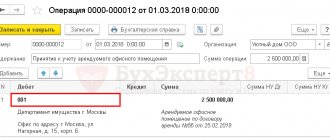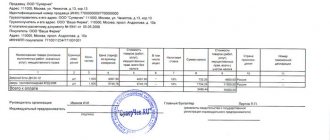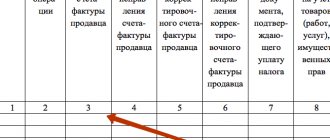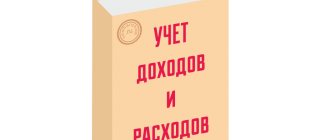In taxation, the book of purchases and sales is a summary statement in which all data from invoices is entered. On their basis, tax deductions for VAT are made for a certain reporting period.
Documents subject to firmware
You have to stitch documents and copies of documents that consist of two or more sheets:
- staffing schedule;
- orders of personal and general personnel;
- invoices;
- invoices;
- acts of completed work;
- cash book;
- expense reports;
- waybills;
- salary statements;
- other documents.
The stapling procedure must be approached responsibly: documents that are not neatly filed may not be accepted upon delivery, and potential partners may refuse to cooperate with you. Poor firmware and storage can even lead to substitution of papers.
How to check a book
The requirement to provide reporting in electronic form dictates the need to conduct all financial transactions in electronic format. If in the 1C program all the source papers are displayed correctly, then there are no inaccuracies in the book of purchases and sales. But regular reconciliation should be carried out.
It is best to compare entries in the purchase book with an analysis of balance sheet account 68/2 “VAT”. After this, you need to fill out a VAT return for the required tax period.
To confirm the correctness of the information in the purchase book, 3 values must match:
- VAT on the purchase book.
- Deductions for VAT returns.
- By debit of the balance sheet account 68/2.
If there are discrepancies, then you need to look for the error and analyze it. It is necessary to check and generate the tax registers that make up the VAT return.
Registration procedure
Documents to be bound are first sorted by date, each sheet is numbered with Arabic numerals in the upper right corner, starting with one. The inventory is not numbered. For the cover, they usually take a special paper folder “Case”. To staple standard documents, use an A4 format binder. If the documentation contains envelopes, they are also numbered, and this happens first, and then the contents in it are numbered. If a document has attached sheets, this document is numbered as one, after which an inventory of the attached additions is placed on the reverse side of this sheet.
If an error is made in the numbering, it is carefully crossed out with a thin line and corrected. Next to it is written “Believe the Corrected”, certified by the signature of the responsible person and stamped.
Too large a volume of documentation (more than 250 sheets) should be divided into volumes. Each of them has its own separate numbering. Before the hemming process, all staples and paper clips from the stapler must be removed.
How to number sheets
In most cases, numbering sheets when stitching does not cause difficulties, however, it is necessary to take into account some nuances:
- most often page numbers are written in Arabic numerals in ascending order;
- The sheet number is indicated at the top right. The number should not overlap the contents of the sheet;
- if there are applications, then they must also be numbered (continuous numbering is used);
- if letters with envelopes are attached to the documentation, then first of all the number is placed on the envelope, and then only on the sheets of the letter;
- if you number a case in which there are several volumes, then each of them is numbered separately;
- If it is necessary to number a sheet of a non-standard format, the number is also placed in the upper right corner. If the sheet extends beyond the document, it is folded and filed in the general manner;
- if the sheet contains several scans of small fragments (for example, checks), then it is recommended to create an inventory for the sheet and attach it to the documentation package, numbering it in the general order.
Stitching methods and necessary tools
There are the following ways to staple documents:
- classical method - using a needle and thread, often when sewing a small volume of material in two, three or five punctures;
- using a screwdriver and elastic rope - usually for a large volume of documentation;
- using a hole punch - similar to the classic method, only a hole punch is used instead of a needle;
- using a binding machine - used in printing.
To file documentation you will need the following tools:
- needle (hole punch, awl, drill) – depends on the volume of documents to be stitched;
- dense threads (twine, cord, ribbon);
- case cover 229×324 mm - when creating an archival file;
- paper sticker 4x8 cm - white sheet of paper - witness;
- office glue;
- scissors.
Requirements for government agencies
The requirements for submitting documentation to government agencies differ from the requirements for documents when submitting, for example, to an archive. So, in order to submit papers to the court or tax office, you must follow the rules below:
- documents must be fastened in 3 holes;
- the distance between punctures should not exceed 3 cm;
- the paper is sewn together with thread or thin twine;
- paper measuring 3x5 cm is glued to the last page, on which a certification signature and seal are placed.
Special requirements apply to accounting reports, and the knot on the last page must be sealed with tissue paper.
How to staple documents correctly
Filing of documentation can be done in two, three, four or five punctures. On the left side of the sheet, at a distance of 1-2 cm from the edge, punctures are made in the required number. Then a thread is passed through them according to the scheme (below are diagrams for all methods of stitching documents). On the last page, the ends of the thread are tied in a knot.
Having sewn the documents together with threads, stick the sealing paper onto their ends so that the ends of the thread peek out from under it. The paper is marked “Stitched and numbered” indicating the number of pages. After this, a date, an official’s signature and a seal are affixed. In all methods, only the stitching pattern will change. The procedure itself is the same.
How to keep a book
- It is carried out only by those enterprises whose activities are subject to VAT (clause 3 of Article 169 of the Tax Code of the Russian Federation), since only those enterprises that pay VAT have the right to receive tax deductions.
- The tax return is generated on the basis of extracts from the purchase book: data on the amounts to be deducted (section 8 of the book) is transferred to the VAT return line by line. The number of completed sections corresponds to the number of entries made in the book.
The purchase book also becomes the basis for making accounting entries when VAT is accepted for deduction - entry Dt 68 Kt 19.
The following types of invoices are entered:
- transferred by the seller;
- advance;
- adjustments for a decrease in amounts from the seller and an increase in it from the buyer;
- to carry out construction and installation works for the needs of the enterprise, if VAT on them is accepted for deduction;
In addition to invoices, the following are included:
- strict reporting documentation (copies are acceptable) when paying for transport or accommodation during business trips;
- documents confirming the payment of VAT when importing products from abroad: payment and customs documents;
- when importing products from the EAEU: application and document for payment of indirect taxes.
Entries are made as the right to VAT deductions becomes available. You can enter information from invoices of any type: provided in electronic and paper format, filled out manually with simultaneous completion of individual parts on the computer.
It is not allowed to enter invoices that do not meet the conditions prescribed by Art. 169 of the Tax Code and the forms established by law, as well as:
- received as a gratuitous transfer of funds and products;
- provided by the commission agent from the principal for goods and services transferred for sale and property rights (advances on these transactions are also taken into account), as well as for transactions of acquisition of goods and works for the principal.
- for advance payments for technical and technical equipment purchased for operations that are not subject to VAT;
- preliminary invoices issued after receipt of shipping documents.
This video will tell you about the features of maintaining a purchase book of a sales book:
Rules for filling out the purchase and sales book
Filling out is carried out according to the established rules:
- At the top of the book, you must enter the details of the taxpayer (buyer), full name of the manager, INN, KPP.
- The tax period is included.
- Next comes information in the form of a table: information from invoices that became the basis for VAT deduction.
If incorrect information is found in the book, it is necessary to create additional purchase sheets for the period when the erroneous invoice was recorded before changes were made to it, a note is made in it to indicate the elimination of the erroneous invoice.
Instructions for correct filling:
- Name of the buyer according to the constituent documentation with identification number and reason code for tax registration.
- The tax period during which transfers of amounts, partial advance receipts, or transfers of rights to property were made.
Sample
Since the beginning of October, the registration of the purchase book has been carried out according to new rules, although there have been no significant changes.
New filling rules:
Sample checkpoint for 2021
Features of submitting documents to the archive
Preparation of documentation consists of:
- systematization of documents;
- numbering;
- stapling documentation into one folder;
- filling out the inventory;
- document cover design.
This procedure for filing documentation is considered normal and provides for its storage for at least 25 years. If the papers will be stored for more than 25 years, a cardboard cover will be placed on the set of documents to protect the file. The cover indicates: name of the organization, name of the case (orders, invoices, acts), structural unit, shelf life. If an organization has changed its name for any reason, both names must be reflected on the cover of the document, with the previous one indicated in brackets.
When stitching archival files, make sure the text is readable. Cases are numbered in pencil in the upper right corner. The A3 sheet is numbered as one, stitched on the left and folded. If a sheet is hemmed in the middle, it is numbered as 2 sheets. Pictures, photographs, diagrams, maps are numbered on the reverse side at the top in the left corner.
For what period should the cash book be stitched?
When thinking about how to stitch together a cash book for the year, you first need to decide whether there is a need to set such a time period. Depending on the amount of turnover, the cash book can be stitched together for different periods:
- Monthly.
- Quarterly.
- Once a year.
This is due to the convenience of work, since there is no point in putting everything into one heavy volume if there are many operations. The enormous thickness will turn the action “how to sew a book with your own hands” into hard work. The subtleties of working with documentation should be spelled out in the organization’s accounting policies and in orders to establish cash discipline.
If an organization’s time period is not a year, but a month or a quarter, then the numbering of pages in the cash book should begin from the very beginning upon the arrival of the reporting period. This rule does not apply to the numbering of cash orders.
Periods for storing documents in the archive
The storage periods for documentation are regulated by the legislation of the Russian Federation; they depend on the type of documents:
- 75 years - storage period for business books, notarial records, documents related to personnel or privatization;
- 20 years is the shelf life of patent documentation for inventions, documents on capital construction and design activities;
- 15 years - shelf life of scientific works and research;
- 5 years is the storage period for archival documentation of an agricultural organization;
- 5 years - storage period for documents related to film and photography activities;
- 3 years is the period for which photographic and video documents are stored.
At first glance, the procedure for stitching documents looks complicated, but once you study all the rules, the process will no longer seem difficult.
Author of the article: Ekaterina Moguchaya
To reduce the number of paper documents and think less about their firmware and storage, keep records in the web service for small businesses Kontur.Accounting. Here you can work with legally significant electronic documents: take them into account, exchange them with counterparties and send them to regulatory authorities. Our service includes simple accounting, payment of taxes, salaries and contributions, and sending reports via the Internet. The first 14 days of work are free.
Document flow rules
Apart from the general recommendations specified in the office work instructions, there are no established guidelines for stapling documents. Tax authorities require that financial documents be protected from the possibility of loss and forgery. Such requirements are not imposed on documents such as balance sheets and order journals, since they are, in fact, secondary.
But the primary documentation must undergo a binding procedure. The cash book and income book must be stitched. But how to bind a book if the law does not prescribe the rules?
The cash book is considered a significant tool in the field of recording cash flows, so it must be maintained within the framework of strict discipline. The cash book is compiled in a single copy, and all enterprises, as well as individual entrepreneurs, if they work with cash, must have it.
If the book is kept manually
If the cash book is maintained without the help of a computer, then a standard journal is purchased for these purposes. The question of how to stitch a book filled out manually does not arise, since the magazine is already stitched. All sheets are numbered and sealed at the beginning of the book. Inside the magazine there is a loose leaf and a cashier's report located horizontally. Before recording begins, the cashier's report is torn off, and the entries on it are duplicated from a loose-leaf sheet as a carbon copy. Of course, you will have to flash the cashier’s report yourself.
If the process of binding a book is very labor-intensive, you can use printing services. The cardboard cover and hard binding will give the cash book additional safety. In addition, it will be impossible to cut the binding to replace sheets. The risk of changing sheets cannot be eliminated when a book is self-bound. Eventually, the threads can be pulled out and the whole thing put back together.
How many holes are needed?
There are different opinions about how many holes to make in a book. In principle, if you are not sure that the brochure will be reliable, then you can pierce 5 holes. But it is not forbidden to make 3 holes. Many organizations make do with two holes made with a hole punch. However, such a design makes it possible to easily replace sheets in the book, and therefore does not meet with enthusiasm from inspectors.
So, the sheets must be folded in an even stack so that the book has an orderly appearance. The holes are made on the left side strictly vertically. Then thread or twine is pulled through the holes twice so that the ends are on the wrong side. An example of how to sew a cash book can be seen in the photo above. The ends of the threads are tied with a strong knot several times so that everything is held securely.
Is it necessary to staple for electronic document management?
Recently, organizations have begun to actively switch to electronic document management in order to reduce paperwork. Electronic document management has a number of advantages:
- no need to carry papers to sign;
- there is no need to spend money on large amounts of paper and toner;
- no need to deliver documents.
But this raises the question of maintaining cash discipline. How to bind a book if a digital signature is used? The cash book produced in the electronic circulation system is not printed or stapled. There are technical means by which the book is protected from interference and digitally signed.
How to sew everything yourself?
It is definitely forbidden to fasten the book with glue, tape or staples; only threads are allowed. How to stitch a cash book correctly if it is maintained in an accounting program? You need to print out a loose leaf sheet and a cashier's report every day. Loose sheets make up the cash book, but they must be sewn together at the end of the reporting period.
It is necessary to fold all the sheets in order, attach a properly executed title on top and pick up:
- igloo;
- awl;
- hole puncher.
Which tool to use depends on the thickness of the bundle being fastened. The threads used are harsh. If they are not strong enough, the book may fall apart.








